 I was saddened to hear of Farley Mowat’s death, at the age of 92. Many will remember him as an environmentalist and a champion of the rights of native Canadians, as indeed he was. I will remember him for his books about sailing and the sea. He wrote 45 books, most of which were not about the sea. He may be best known for Never Cry Wolf, which was also made into a movie.
I was saddened to hear of Farley Mowat’s death, at the age of 92. Many will remember him as an environmentalist and a champion of the rights of native Canadians, as indeed he was. I will remember him for his books about sailing and the sea. He wrote 45 books, most of which were not about the sea. He may be best known for Never Cry Wolf, which was also made into a movie.
Nevertheless, his books Grey Seas Under and The Serpent’s Coil are classic accounts of the little understood business of deep-sea salvage. Mowat’s very funny book about his misnamed schooner, Happy Adventure, in the The Boat Who Wouldn’t Float should be required reading for any boat owner. Whatever his subject, Mowat was a master storyteller. He will be long remembered.

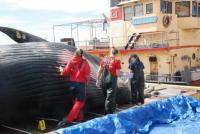 Fin and sei whale are not usually seen in New York’s upper harbor, yet in a period of less than a month, two have made an appearance. Unfortunately, both were dead, pinned to the bows of ships.
Fin and sei whale are not usually seen in New York’s upper harbor, yet in a period of less than a month, two have made an appearance. Unfortunately, both were dead, pinned to the bows of ships.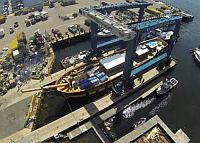 The
The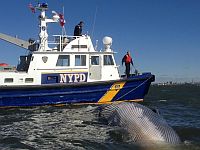 Update: The dead whale is now identified as a
Update: The dead whale is now identified as a 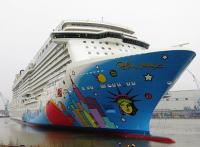 The Norwegian Breakway is one year old this week. Unfortunately, it wasn’t a particularly auspicious birthday. As the cruise ship entered New York harbor yesterday, after a seven day cruise, the captain reported some sort of problem related to the ship’s azipods, which prevented it from docking. Like most new cruise ships, the 1,068-foot Norwegian Breakway, which can carry 3,969 guests plus its crew of 1,651, does not have conventional shaft mounted propellers or rudders. Instead, it is powered by propellers mounted on streamlined pods, which can rotate, and therefore also serve as the ship’s rudders. The ship also has three bow thrusters.
The Norwegian Breakway is one year old this week. Unfortunately, it wasn’t a particularly auspicious birthday. As the cruise ship entered New York harbor yesterday, after a seven day cruise, the captain reported some sort of problem related to the ship’s azipods, which prevented it from docking. Like most new cruise ships, the 1,068-foot Norwegian Breakway, which can carry 3,969 guests plus its crew of 1,651, does not have conventional shaft mounted propellers or rudders. Instead, it is powered by propellers mounted on streamlined pods, which can rotate, and therefore also serve as the ship’s rudders. The ship also has three bow thrusters.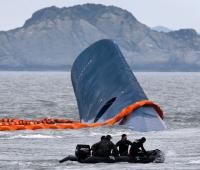 It is not always easy to decipher the news being reported on the tragic sinking of the Korean ferry Sewol , which capsized in the Yellow Sea on April 16, leaving more than 300 dead or missing. There have been numerous reports that the ferry was overloaded when she sank, yet by all indications, the likely problem was that the ship had inadequate stability. The ferry sank while under the command of a relief captain. Last week the
It is not always easy to decipher the news being reported on the tragic sinking of the Korean ferry Sewol , which capsized in the Yellow Sea on April 16, leaving more than 300 dead or missing. There have been numerous reports that the ferry was overloaded when she sank, yet by all indications, the likely problem was that the ship had inadequate stability. The ferry sank while under the command of a relief captain. Last week the 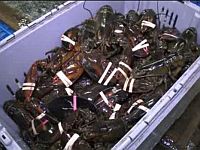 Last August we asked “
Last August we asked “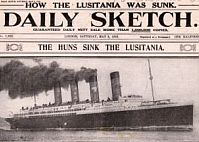 When the Cunard liner
When the Cunard liner 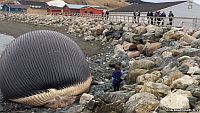 Update:
Update:  This year, the
This year, the  Would the world’s first purpose-built oceangoing roll-on/roll-off ship make a good museum? The
Would the world’s first purpose-built oceangoing roll-on/roll-off ship make a good museum? The 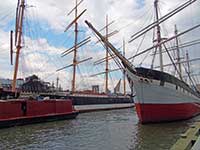
 We have noted before the paradox of ocean shipping — it is simultaneously the most energy efficient means of transportation with the lowest carbon footprint while at the same time, it is a major polluter. (See our post from back in 2010 —
We have noted before the paradox of ocean shipping — it is simultaneously the most energy efficient means of transportation with the lowest carbon footprint while at the same time, it is a major polluter. (See our post from back in 2010 — 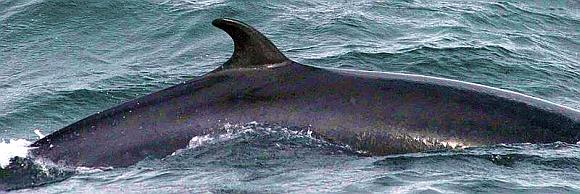 For roughly fifty years, scientists have listened to an unidentified sound in the Southern Ocean, which has been described as a sort of mechanical quacking noise. It has been come to be known as the
For roughly fifty years, scientists have listened to an unidentified sound in the Southern Ocean, which has been described as a sort of mechanical quacking noise. It has been come to be known as the 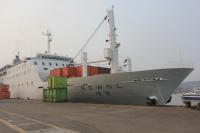 The death toll in the sinking of the
The death toll in the sinking of the  Last week,
Last week,  Happy Earth Day! Then again, I have always thought that we lived on a misnamed planet. The word “earth” is a synonym for dirt while 71% of the planet is covered by water. Perhaps we should be saying Happy Ocean Day!
Happy Earth Day! Then again, I have always thought that we lived on a misnamed planet. The word “earth” is a synonym for dirt while 71% of the planet is covered by water. Perhaps we should be saying Happy Ocean Day!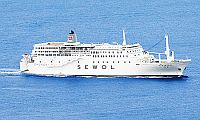 Are passenger ro-ro ferries inherently unsafe?
Are passenger ro-ro ferries inherently unsafe?